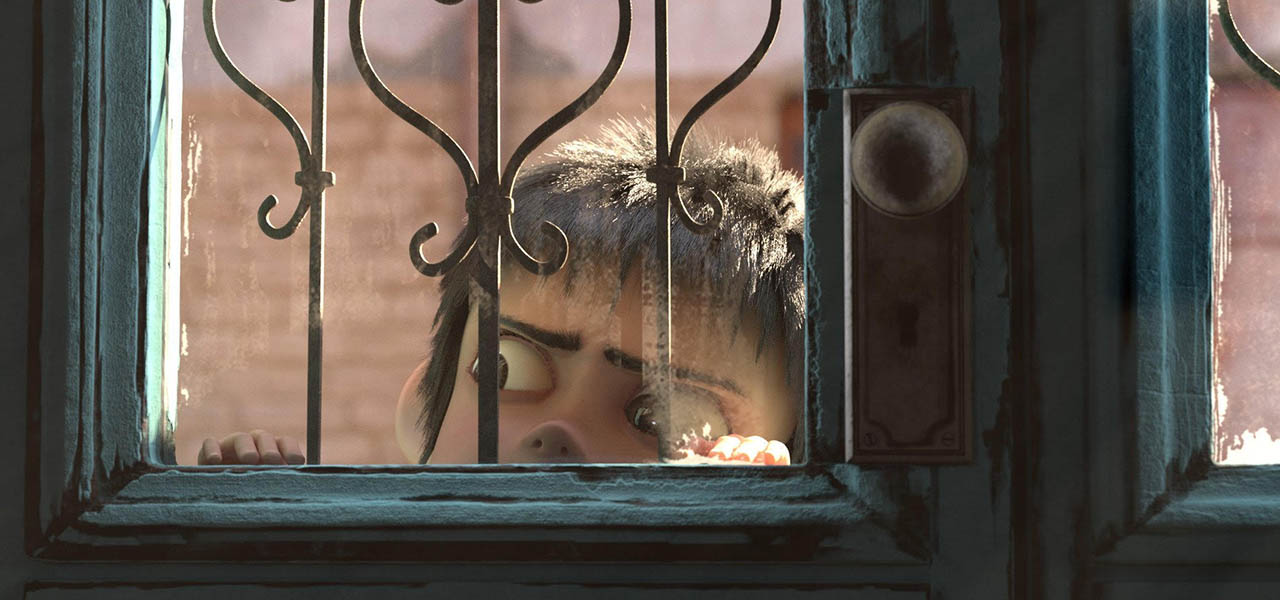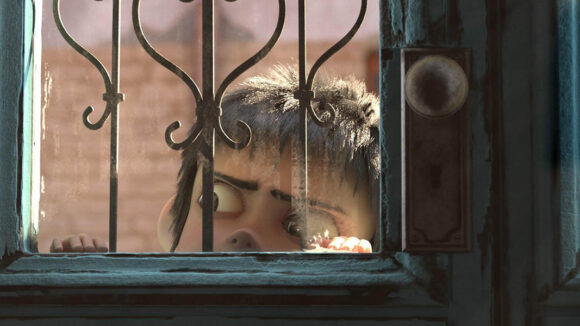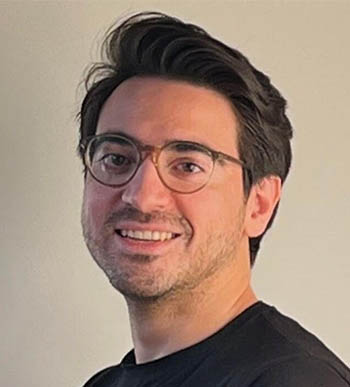

2025 Oscars Short Film Contenders: ‘Tomorrow’ Director Aryasb Feiz
Cartoon Brew is focusing on the animated shorts that have qualified for the 2025 Oscars. The films in this series have qualified through one of multiple routes: by winning an Oscar-qualifying award at a film festival, by exhibiting theatrically, or by winning a Student Academy Award.
Today’s film is Tomorrow from Iranian filmmaker Aryasb Feiz. The short earned its Oscars qualification by winning best animated short film at the Foyle Film Festival in Ireland.
In 1970s Shiraz, Iran, a scrappy 10-year-old street urchin struggles to survive the day-to-day hardships of life. His encounter with a stray dog will change both of their lives. Tomorrow, which this website covered during its early development stages, is a universal tale of friendship brought to life beautifully in cg animation by Feiz’s studio Badstache, which he founded a decade ago in Tehran.
Cartoon Brew: Light is key in telling this story between dawn and dusk, between dark interiors and bright streets. How did you tackle this particular aspect of the film narratively and visually?

Aryasb Feiz: Light was crucial because the position of the sun acted as a ticking clock in this thriller. I carefully planned the exact time of day in the screenplay, and before designing the sets, determined the sun’s position in Shiraz during fall. This allowed us to align the set angles to achieve the lighting and compositions I wanted without breaking continuity. Technically, it was challenging. Our programmers and lighters developed a script that advanced the time of day between shots, so the sun and related lights would subtly shift, making the audience feel time passing rather than seeing a ticking clock.
I also wanted the sun to feel brutal, creating a strong contrast between dark interiors and bright exteriors. Since the sun represents time in this story – and time is the main antagonist – the boy fears it. Whenever possible, he and the dog seek refuge in the shade, finding brief moments of peace away from the relentless march of time.
What was it about this story or concept that connected with you and compelled you to direct the film?
This story emerged from months of brainstorming with my co-writers Amir Zoghi and Kaveh Ruintan. We aimed to create an adult thriller set in Shiraz, something we hadn’t seen before. I wrote the screenplay, and we began production. Over time, I realized I had unconsciously poured a lot of myself into it. While I’ve never experienced poverty or a harsh life, I deeply relate to the boy’s choices under pressure, similar to how I feel about deadlines and time running out. I also empathize with his internal struggle between tradition and modernity, past and future. Unfortunately, the struggles of the Iranian people keep getting worse, and the story hasn’t lost its relevance. It has become even more timely. That’s why I felt compelled to complete the film.
What did you learn through the experience of making this film, either production-wise, filmmaking-wise, creatively, or about the subject matter?
Production-wise, I learned a lot about managing a large team of artists. It’s important to take your time selecting the right people and explaining the vision thoroughly upfront, rather than relying on endless iterations later. I also learned that unexpected things happen – like a global pandemic that forces everyone to work from home for two years – so adaptability is crucial in our line of work.
Filmmaking-wise, I learned how to tell more with fewer shots and compress storytelling into single shots instead of multiple cuts. To shorten the film from thirty minutes to its final length, I rewrote the screenplay, cutting unnecessary introductions and trusting the audience to deduce certain things. I also developed a deep appreciation for rhythm, it’s the best tool for a filmmaker. And most importantly, I learned to trust my vision and not doubt myself without clear evidence of a problem.
Creatively, I discovered the importance of balancing work and life. A healthy life fuels creativity, not just for me as the director but for the entire team.
Can you describe how you developed your visual approach to the film? Why did you settle on this style/technique?
I wanted the film’s look to feel familiar yet distinct. Given that the story is darker and aimed at adults, I thought a familiar mainstream cg style would be effective in challenging audience expectations. I’ve always admired Mehdi Alibeygi’s character designs, so after finishing the script, we started designing the characters with his influence. For the sets, I aimed for a more realistic look – though not overly so, as I didn’t want the characters to feel out of place. The core idea was that the boy himself is out of place, so I used more stylized characters, with the boy being the most stylized, while the sets are more realistic and large in scale. The harsh environment visually reinforces the fact that this is not a place for a child, with the boy struggling to reach or fit into anything.
